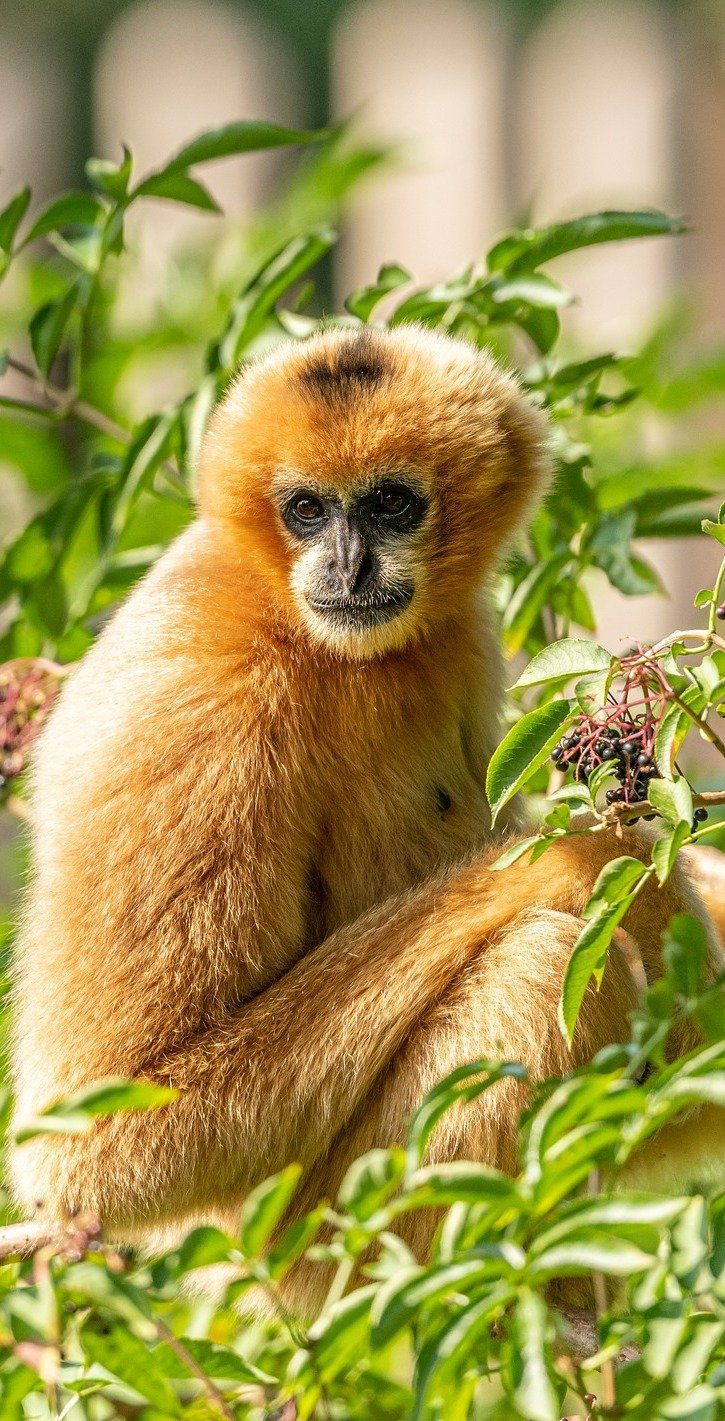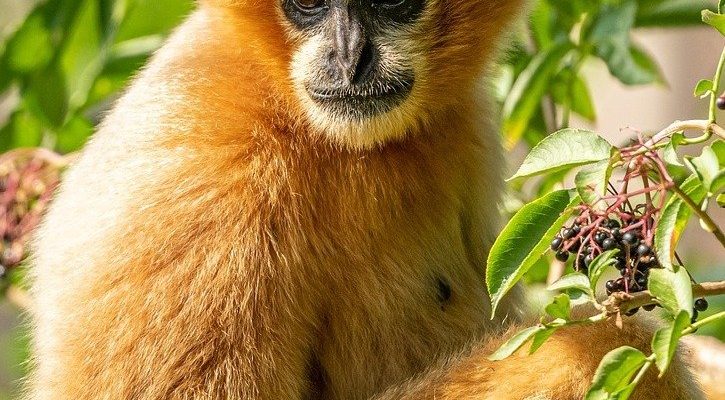
Gibbons belong to the family Hylobatidae and are often referred to as “lesser apes.” They live in the forests of Southeast Asia, swinging gracefully from branch to branch. But their intelligence isn’t just about physical agility; it’s also about how they think, communicate, and interact with their environment. Let’s dive into the fascinating world of gibbon cognition and behavior.
Cognitive Abilities of Gibbons
Gibbons display a range of cognitive abilities that are surprisingly advanced. Here’s the thing: when we look at animal intelligence, we often measure it based on problem-solving skills, social interactions, and adaptability. Gibbons excel in all these areas.
Firstly, gibbons can solve simple problems. Researchers have noticed that they can complete tasks that require a bit of creativity and logic. For example, in studies where they had to retrieve food from a container, gibbons were observed figuring out how to manipulate objects to get to the treat. It’s similar to how toddlers learn through trial and error; they try different methods until something works.
Additionally, gibbons exhibit social intelligence. They live in family groups, and their social interactions involve complex communication. They use vocalizations not just for mating calls, but also for expressing emotions or coordinating activities. Think of it as a family meeting, but held high in the trees. This social structure and ability to communicate effectively show that they have a good grasp of social dynamics—key indicators of intelligence.
Communication Skills
Speaking of vocalizations, gibbons are one of the most vocal primates out there. Their songs fill the forests at dawn and dusk, creating an enchanting symphony. But these aren’t just random noises; there’s meaning behind each call.
Gibbon songs can vary in length and complexity, often unique to specific species. They use their songs to establish territory and strengthen social bonds. It’s like sending out an invitation to neighbors: “Hey, we’re here! We’re a family, and we’ve got the best trees!” Moreover, researchers have found that gibbons can recognize each other’s calls, which is crucial for maintaining their social structure.
Interestingly, their communication isn’t purely vocal. Gibbons also use body language and facial expressions. A tilt of the head or a raise of the arm can convey important messages. This blend of vocal and non-vocal communication strategies demonstrates their advanced cognitive skills, showcasing how they navigate relationships in their community.
Tool Use and Problem Solving
Now, let’s get into one of the more fascinating aspects of gibbon behavior: their use of tools. While not as common as in some other primates, gibbons have been observed using tools to aid in their survival. This might include using sticks to extract insects from tree bark or even manipulating leaves to create a comfortable nest.
This ability to use tools shows not just intelligence, but also creativity. Imagine being able to think outside the box, taking a branch and turning it into a useful object! This problem-solving skill is a hallmark of intelligent species.
Researchers note that this tool use isn’t just instinctual; it involves planning and an understanding of cause and effect. Gibbons need to assess their environment and decide what tool would work best for the task at hand. It’s like being faced with a puzzle and figuring out the best pieces to solve it.
Social Structure and Groups
In the realm of social structures, gibbons have a unique setup. They typically live in monogamous pairs, often with their offspring, which creates a tight-knit family unit. This family dynamic is important for their survival and cognitive development.
Living in a group allows gibbons to learn from each other. Young gibbons observe their parents and siblings, picking up skills and social cues along the way. You might compare this to how children learn from their families, absorbing information that helps them navigate the world.
Within these groups, you’ll see fascinating social behaviors, like grooming. Grooming isn’t just about cleanliness; it strengthens bonds between family members. This behavior also highlights their empathy and ability to connect emotionally, which are key elements of intelligence.
Adaptability to Environment
Gibbons are incredibly adaptable creatures. Their ability to thrive in various forest environments speaks volumes about their cognitive skills. They can adjust their behavior based on seasonal changes, food availability, and even disturbances from human activities.
For instance, when food sources change, gibbons switch their foraging strategies. They might explore new areas for food or change their daily routines to adapt. Imagine if you had to change your daily habits based on what’s available to eat—you’d have to be pretty clever to figure out the best approach!
This adaptability also extends to their social setups. If a mate is lost or if they encounter a new group, gibbons can modify their social behaviors to fit the new circumstances, demonstrating their ability to think on their feet and respond to challenges.
Conservation and Intelligence
Now, you might wonder why understanding gibbon intelligence matters in the grand scheme of things. As their natural habitats face threats from deforestation, hunting, and climate change, acknowledging their cognitive abilities can help in conservation efforts.
By recognizing that gibbons are sentient beings with complex social structures and intelligence, we can advocate for their protection more effectively. You see, conservation isn’t just about saving a species; it’s about preserving the richness of life and the intricate web of relationships that these animals maintain.
Research into gibbon behavior can also guide us in creating better conservation strategies. The more we understand how they think and interact, the more effectively we can design habitats and protect their environments. This is essential for ensuring their survival for future generations.
Final Thoughts on Gibbon Intelligence
So, how smart are gibbons? Their cognitive abilities are nothing short of remarkable. From their problem-solving skills and communication prowess to their adaptability and social structures, gibbons have shown that they possess a complex intelligence that’s worth our attention.
Understanding these fascinating creatures not only enriches our knowledge of the animal kingdom but also highlights the importance of protecting their habitats. Just like us, gibbons have families, emotions, and a way of life that deserves to be honored. Let’s ensure they swing through the trees for years to come, reminding us all of the intricacies of life and intelligence in the wild.

